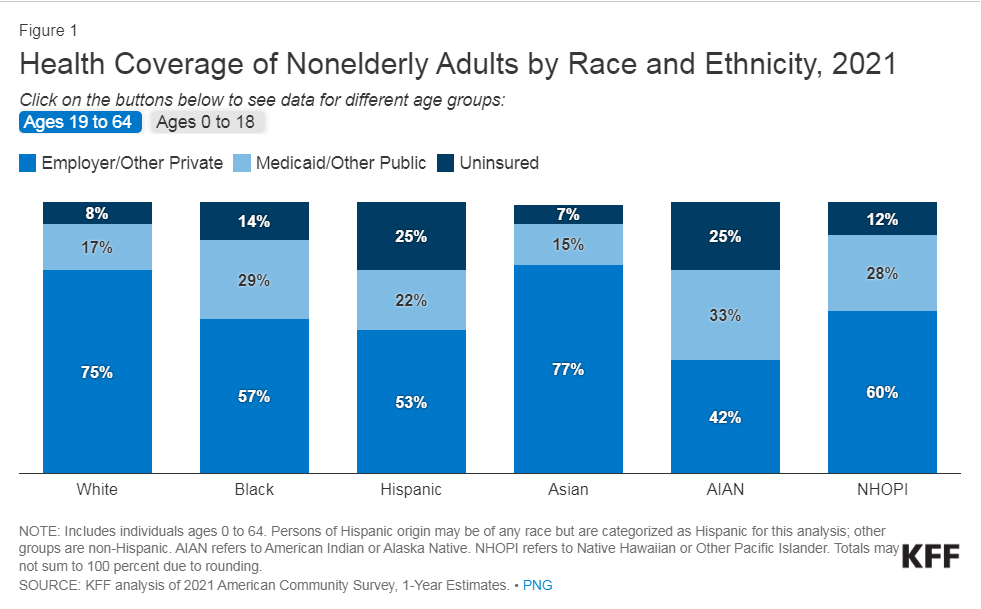Medicaid and Racial Health Equity
The COVID-19 pandemic has highlighted and exacerbated longstanding racial and ethnic disparities in health and health care. People of color fare worse than White people across many measures of health and health care, reflecting inequities within the health care system as well as across broader social and economic factors that drive health (often referred to as social determinants of health or as health-related social needs) that are rooted in racism and discrimination. As a major source of health coverage for people of color, Medicaid programs can help to address racial health disparities. Medicaid enrollment has increased during the pandemic, primarily due to the continuous enrollment provision that was implemented during the pandemic and that ended on March 31, 2023. Promoting continuity of coverage as states unwind the Medicaid continuous enrollment provision that has been in place throughout the pandemic can help to mitigate disparities in coverage and care.
The federal government and many states have identified advancing health equity as a key priority for the Medicaid program. This issue brief provides greater insight into how Medicaid can help address racial health disparities by answering three key questions:
- How does Medicaid coverage vary by race and ethnicity?
- How can Medicaid eligibility policies mitigate racial disparities in coverage?
- What other Medicaid initiatives are states pursuing to address racial disparities in health and health care?

